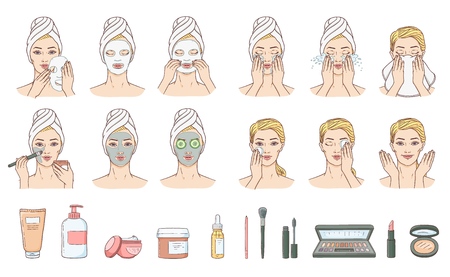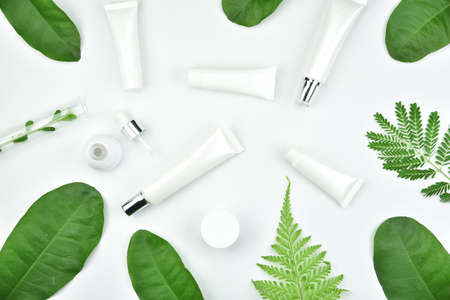Introduction to Chemical Peels and British Skin
Chemical peels have become a mainstay in modern skincare, offering a versatile solution for concerns ranging from dullness to stubborn pigmentation. As the popularity of these treatments grows across the UK, it’s vital to consider not just the science behind chemical peels but also how they interact with the distinctive qualities of British skin. Typically, British skin tends to be lighter in tone and can often be more sensitive to environmental stressors such as fluctuating temperatures, wind, and persistent dampness—all hallmarks of the UK climate.
Moreover, the relatively low levels of sunlight in Britain compared to other regions influence both the prevalence of certain skin conditions and how skin responds to exfoliating treatments. This unique combination of genetics and environment means that selecting the right chemical peel ingredients isn’t just a matter of efficacy—it’s also about safety and long-term skin health. In this article, we’ll delve into which actives are best suited for British skin types, considering both scientific evidence and real-world experience under UK skies.
2. Scientific Principles Behind Chemical Peel Ingredients
Chemical peels rely on a fascinating interplay between active ingredients and the skin’s natural biology. Each ingredient acts at a specific depth, influencing both the surface and deeper layers of the skin. For British skin types—which often contend with environmental stressors such as fluctuating temperatures, humidity, and lower sunlight exposure—understanding these scientific principles is vital to achieving optimal results without unnecessary irritation.
How Chemical Peels Work
At their core, chemical peel agents function by breaking down the bonds that hold dead skin cells together. This controlled exfoliation triggers regeneration in the epidermis and sometimes the dermis. The process can help address common British skin concerns, including dullness from lack of sunlight, pigmentation due to unpredictable UV exposure, and sensitivity from colder climates.
Ingredient Action on Skin Layers
| Ingredient Type | Main Action | Targeted Skin Layer |
|---|---|---|
| Alpha Hydroxy Acids (AHAs) | Break down surface cell bonds; increase hydration | Epidermis (surface layer) |
| Beta Hydroxy Acids (BHAs) | Dissolve oil; penetrate pores | Epidermis & pores |
| Trichloroacetic Acid (TCA) | Coagulates proteins; deeper exfoliation | Epidermis & upper dermis |
The British Skin Context
Research highlights that fairer British complexions are more prone to post-inflammatory hyperpigmentation and sensitivity. AHAs like glycolic acid provide gentle yet effective exfoliation, making them popular for those with delicate or redness-prone skin. Meanwhile, salicylic acid (a BHA) is particularly effective for oily or combination skin—a concern for many living in the UK’s humid regions.
Moreover, clinical studies published in leading dermatological journals have shown that lower concentrations of acids can achieve impressive results when applied regularly, reducing the risk of over-exfoliation—a crucial factor given the temperamental British climate. By understanding how these ingredients interact with different skin depths and types, individuals can select formulations scientifically tailored to British needs.

3. Top Chemical Peel Ingredients Suited for British Skin
When it comes to chemical peels, choosing the right ingredients is crucial—especially for British skin, which often faces unique challenges such as sensitivity, variable weather conditions, and a higher prevalence of fair complexions prone to redness. Here’s a closer look at the safest and most effective chemical peel ingredients that dermatologists and skincare experts recommend for British skin types.
Alpha Hydroxy Acids (AHAs)
Among AHAs, glycolic acid and lactic acid are standout choices. Glycolic acid, derived from sugar cane, is well-loved for its ability to gently exfoliate dead skin cells and improve overall skin texture—perfect for dull or uneven complexions often exacerbated by the UK’s grey climate. Lactic acid, sourced from milk, is milder and offers hydration alongside exfoliation, making it an excellent option for those with sensitive or dry skin commonly found in British populations.
Beta Hydroxy Acid (BHA)
Salicylic acid, the most common BHA, excels at penetrating oil-filled pores—making it particularly effective for individuals who experience breakouts or have combination skin. Given the fluctuating humidity in Britain, clogged pores and congestion can be frequent concerns; salicylic acid helps keep blemishes at bay without causing excessive dryness or irritation.
Polyhydroxy Acids (PHAs)
For those with ultra-sensitive or rosacea-prone skin—a not uncommon feature among Britons—PHAs like gluconolactone offer a gentler alternative. PHAs provide similar exfoliating benefits as AHAs but with larger molecules that penetrate more slowly, minimising irritation while enhancing moisture retention. This makes them ideal for people navigating both environmental stressors and naturally reactive skin.
Tailoring Ingredients to British Skin Concerns
Understanding the nuances of British skin means prioritising ingredients that respect the delicate balance between effectiveness and tolerance. By focusing on AHAs for brightening and smoothing, BHAs for deep pore cleansing, and PHAs for gentle renewal, individuals can address common issues such as dullness, congestion, and sensitivity—all while safeguarding their complexion against the UK’s ever-changing climate.
4. Cultural Attitudes and Regulations in the UK
When considering the best chemical peel ingredients for British skin, it’s essential to recognise not only the scientific aspects but also how cultural attitudes and regulations shape skincare choices across the UK. Unlike some countries where aggressive treatments are more commonplace, British consumers typically favour a more understated, natural approach to beauty—where healthy, glowing skin is prized over dramatic transformations.
Local Acceptance and Preferences
Chemical peels have gradually gained popularity in Britain, but there remains a degree of caution among many. Brits tend to seek subtle improvements rather than drastic changes, valuing treatments that offer gentle exfoliation and minimal downtime. As such, milder acids like lactic acid and mandelic acid are often preferred over more potent alternatives. Dermatologists and skincare professionals frequently recommend peels that cater specifically to sensitive or fairer skin tones commonly found in the UK.
Popular Peel Ingredients by Preference
| Ingredient | Popularity Among British Clients | Typical Benefits |
|---|---|---|
| Lactic Acid | High | Gentle exfoliation, hydration boost |
| Mandelic Acid | Moderate-High | Mild on sensitive skin, brightening effect |
| Glycolic Acid | Moderate | Smoother texture, improved radiance |
| Salicylic Acid | Moderate-Low | Blemish control, oil regulation |
| TCA (Trichloroacetic Acid) | Low | Targeted rejuvenation for experienced users |
Legal Considerations and Professional Standards
The UK maintains strict regulations regarding the use of chemical peels, especially those containing higher concentrations of active ingredients. Only qualified professionals—such as dermatologists or registered aestheticians—are permitted to administer medium-to-deep chemical peels. The General Medical Council (GMC) and Health and Safety Executive (HSE) provide oversight to ensure safety and efficacy for patients. Over-the-counter products are generally limited to lower-strength formulations to minimise risks.
Main Regulatory Guidelines in Britain:
- Professional Licensing: Practitioners must be properly trained and certified.
- Ingredient Restrictions: Maximum allowable concentrations for acids in consumer products.
- Informed Consent: Clients must be fully briefed on potential side effects and aftercare requirements.
- Clinic Standards: Hygiene, record-keeping, and follow-up care are stringently enforced.
This blend of cautious optimism, preference for gentler results, and rigorous legal framework ensures that chemical peels remain a trusted yet measured choice among those looking to enhance their complexion in Britain.
5. How to Choose the Right Peel for Your Skin Type
Choosing the perfect chemical peel can feel a bit daunting, especially with British skin’s unique needs in mind. Our climate is famously unpredictable—wet and windy in winter, mild but occasionally sunny in summer—so our skin often leans towards sensitivity, uneven pigmentation, and dullness. Here’s my hands-on advice for finding a peel ingredient that truly works for you, backed by science and shaped by local experience.
Sensitivity: Gentle Yet Effective Options
If your skin tends to flush easily or reacts to new products, opt for gentle acids. Lactic acid is a brilliant choice; it’s derived from milk and known for hydrating while exfoliating, making it perfect for those whose cheeks go rosy at the first sign of wind. Another ally is mandelic acid, which has larger molecules that penetrate slowly, reducing irritation. Always patch test new products behind your ear or along your jawline before applying them more widely.
Pigmentation: Tackling Uneven Tone
British skin often battles with sun spots, freckles, or post-acne marks—especially after rare sunny spells. Glycolic acid is renowned for brightening and evening out pigmentation thanks to its small molecular size and deep action. For stubborn dark patches, look for peels containing kojic acid or azelaic acid; both are celebrated for their ability to lighten pigmentation gently over time without harsh bleaching effects.
Weather-Adapted Routines: Seasonal Strategies
The ever-changing British weather means our skincare needs to flex through the year. In colder months, choose peels with added hydrating ingredients like hyaluronic acid or panthenol. These help buffer against dryness caused by central heating and cold winds. During spring and summer, when UV exposure increases (even if skies are grey), opt for milder peels and pair them with daily SPF 30+—a non-negotiable step to prevent further pigmentation and maintain results.
Your Personalised Peel Plan
Ultimately, listen to your skin and start slow—a once-weekly application is plenty at first. If you’re unsure, consult a local dermatologist who understands the nuances of British skin types and weather patterns. By selecting ingredients tailored to sensitivity, pigmentation concerns, and seasonal changes, you’ll enjoy brighter, healthier-looking skin that feels as good as it looks—even on a drizzly London afternoon.
6. Expert and Personal Insights
When it comes to choosing the best chemical peel ingredients for British skin, hearing from those who work with these treatments daily is invaluable. British skincare experts like Dr. Emma Craythorne, a renowned consultant dermatologist in London, often recommend glycolic acid peels for their gentle yet effective exfoliation—perfect for our climate where skin can be both sensitive and prone to dullness. She notes, “British weather brings its own set of challenges, especially with fluctuating humidity and pollution. Glycolic and lactic acids remain my go-tos because they respect the skin barrier while delivering visible results.”
From my own journey navigating the world of chemical peels, I found that mandelic acid offered a unique balance: mild enough to avoid irritation on my fair, freckle-prone complexion, but potent enough to give me that sought-after radiance after a grey winter. Friends with more resilient skin types have shared glowing reviews about trichloroacetic acid (TCA) peels, particularly for tackling sun spots acquired during rare but intense British summers.
Aesthetic practitioners across Manchester and Edinburgh echo similar sentiments: patch testing and gradual introduction are key. “We always start clients on lower concentrations,” shares one seasoned therapist from Glasgow, “especially since many Brits have underlying sensitivities from years of unpredictable weather and central heating.” This careful approach has helped countless clients not only achieve smoother, more even-toned complexions but also boost their confidence—a subtle transformation that goes beyond the mirror.
Ultimately, integrating scientifically-backed ingredients tailored to the unique needs of British skin doesn’t just bring aesthetic benefits; it fosters a sense of well-being and self-care. Whether you’re guided by clinical expertise or your own beauty journey, the right chemical peel can become a cherished ritual—unveiling fresher, healthier-looking skin with every treatment.


